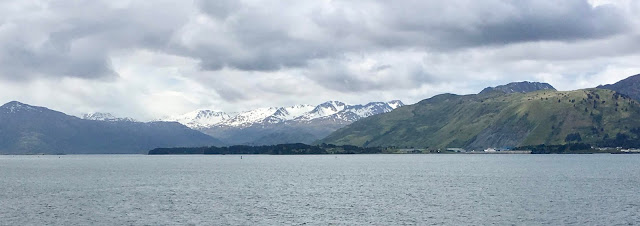In and out of the water
 |
| Chris snags WHOI OBS under Tim's watchful eye. |
all of the OBS.
Sound waves from the seismic source array travel up to ~20 miles below the seafloor, and then bend back towards the surface. The returning sound waves are recorded by the ocean bottom seismometers, which are very sensitive and detect very small vibrations at the seafloor. We can model the paths of sound waves through the earth and the time it takes them to travel along those paths to image geological structures deep below the Emperor Seamount Chain, which is one of the main objectives of our study. While we were creating sound sources along the line, Valeria and Luan did some tests of how sound waves recorded by our OBS may have traveled through the earth for different hypothetical geological structures below the Emperor Seamounts.
 |
| Calculating expected paths of sound waves for different hypothetical earth structures. In this model, the seamount is underlain by a dense body of frozen magmas. |
Collecting these data has involved putting a lot of gear into the water and pulling it out again. The seismic source array comprises four 30-foot-long floats below which 36 elements of the array are suspended on chains and hang about 12 meters below the sea surface. Wrangling all of that gear into and out of the water is a big, complex job.
After creating sound sources along our first profile, we then recovered all of the ocean bottom seismometers. The OBS have flotation (glass spheres and syntactic foam) that makes them buoyant, but they are held down on the seafloor by anchors. When we are ready to retrieve one, we send it an acoustic signal instructing it to release from its anchor, after which it floats back to the surface. The ship’s capable mates maneuver the vessel right next to the OBS so that the OBS team and ship’s crew can pluck it from the water. Even after sailing on many cruises where we used OBS, I’m always amazed they come back! Happily, all 28 OBS returned from the first line.
 |
| The seismic source team deploys one of the ~30-ft-long source arrays. It ain't easy. |
Donna Shillington
LDEO



Comments
Post a Comment